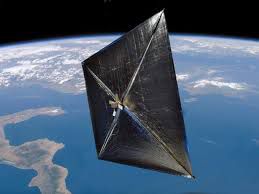Pale Red Dot
Pale Red Dot
I chuckled when I saw this docudrama video, Journey to a Pale Red Dot.

The ESO has a somewhat grandiose plan to send probes to Proxima Centauri to image a suspected Earth-like planet called Proxima-b. This is a planet that is 1.3 times the size of Earth and is tidally locked in the habitable zone of its sun.
How in the heck do they plan to do this? The project will involve sending several solar sail spacecraft to Proxima Centauri using laser light. The sails would be constructed out of very strong but thin (400 molecules thick) material with a very tiny (few centimeters) processor control with tiny correction engines attached at the center of the sail.

The solar sail ships would be only 4 meters in size and they would be deposited in space above a location in Chille at La Silla. At that location an array of powerful lasers would simultaneously impact each of the solar sail ships, accelerating them to 20% the speed of light. This would enable the ships to reach Proxima Centuari in about 16 or so years, image the alleged Earth-like planet, and then return.

I'm not too sure how easy this would be, but it sounds rather theoretical to me. The idea of sending probes out that far for that long seems rather like a fantasy. Basically, we wouldn't see any evidence for at least 2 or more decades. By that time, we'll be able to determine if there is life on Proxima-b by use of new and more powerful telescopes like the James Webb Space telescope.

Besides, by then NASA will have come up with a working warp drive engine and we can go there in far less time, perhaps in a few months. Long-range plans that would involve decades to get there are not very practical. No one wants to wait that long for results, not in this instant gratification modern world we live in.
Thanks for reading.
Bạn đang đọc truyện trên: Truyen247.Pro